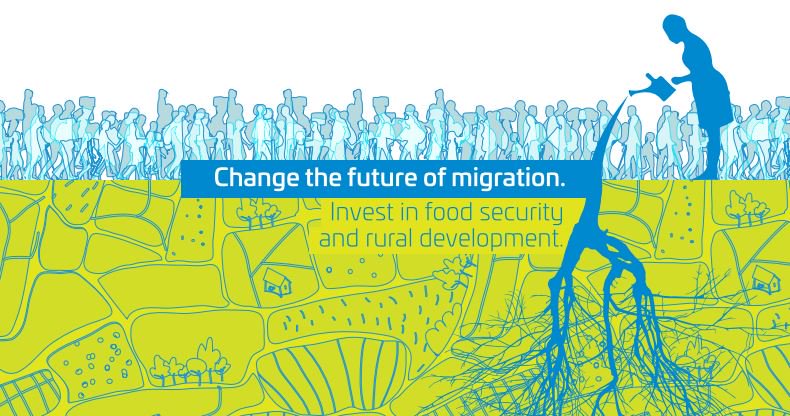World Food Day: Zero Hunger Generation
Change the future of migration. Invest in food security and rural development.
“Change the future of migration. Invest in food security and rural development” is the slogan promoted by the Food and Agriculture Organization (FAO) of the United Nations for World Food Day today, October 16, 2017.
More people have been forced to flee their homes in recent years than at any time since World War II. Lack of access to food and clean water are major contributing factors to this global migration crisis.
According to the United Nations, three-quarters of the extreme poor make their livelihoods in agriculture or other rural activities. Creating conditions that allow rural people to stay at home and have more resilient livelihoods is a crucial component of any plan to tackle the migration crisis.
Enabling people to have control over their food supply is essential for food security, says Maryknoll Father Kenneth Thesing, who serves as an adviser to FAO in Rome.
Father Thesing has become an advocate for the U.N.’s Zero Hunger Challenge, an initiative launched in 2012 to establish access to food as a human right and to build sustainable food and agriculture systems. The goal of the challenge, which is part of the U.N.’s Sustainable Development Goals, is “measurable progress in ending hunger and malnutrition and creating inclusive, sustainable and resilient food systems by 2030.”
According to the U.N., some 800 million people go to bed hungry every night—that’s 1 in 9 people—even though we produce enough food to feed everyone on the planet. By changing habits that have an effect on our climate, for example by wasting less food, saving water, and recycling, we can become the Zero Hunger Generation, the first generation to make hunger vanish from the planet.
FAO is working with governments, the private sector and local communities to address food insecurity and poverty in rural areas. That includes creating business opportunities and jobs for young people that are not only crop-based (such as small dairy or poultry production, food processing or horticulture enterprises) as well as reducing conflict over natural resources and finding solutions to environmental degradation.
By tackling food insecurity and poverty in rural areas, we can move toward making migration a choice rather than a requirement to have a decent life.
Faith in action:
Print and share the World Food Day Activity Book. This 20-page educational tool for teachers, students and anyone who wants to learn more about the theme for 2017 offers creative answers to questions like, “Why are people migrating?” and “How can we give people the choice to stay at home?” It also shows how the global goal to reach Zero Hunger can address many of the reasons that cause people to migrate. The activity book includes instructions for young people who want to enter the World Food Day Poster and Video Contest. The deadline is November 10.
http://www.fao.org/world-food-day/2017/comm-toolkit/en/
Learn what you can do about food waste. Use the U.S. Environmental Protection Agency’s “Food: Too Good to Waste” toolkit to measure how much food is really going to waste in your household and ways to reduce food waste at home and in your community.
https://www.epa.gov/recycle/reducing-wasted-food-home#toolkit

